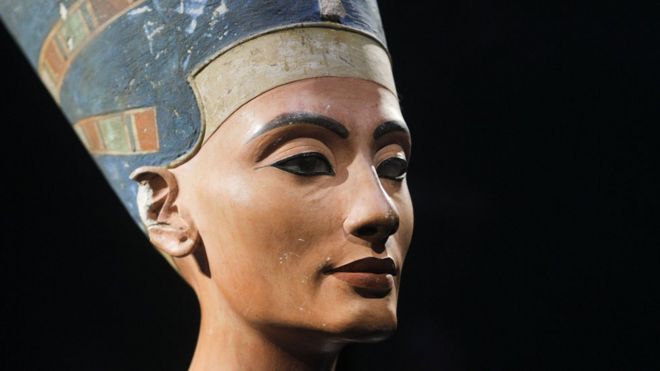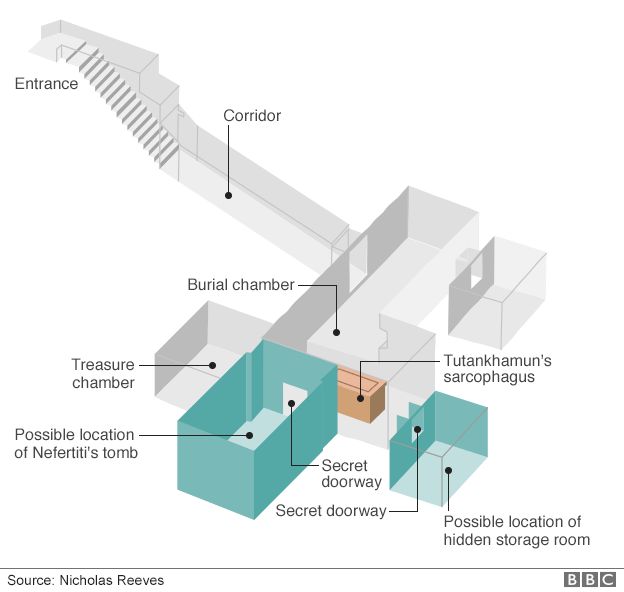
Egypt says a search for the resting place of the pharaonic Queen Nefertiti has revealed possible "organic material" inside empty spaces behind two walls in the tomb of Tutankhamun. The antiquities minister said radar scans carried out in November pointed to "different things behind the walls".
She ruled in the 14th Century BC, and may have been Tutankhamun's mother.
His tomb was discovered in 1922 by British archaeologist Howard Carter.
Mystery design
Announcing the results of November's scans on Thursday, Antiquities Minister Mamdouh el-Damaty said they had revealed the presence of two empty spaces behind two walls of the burial chamber.
"We can say more than 90% that the chambers are there. But I never start the next step until I'm 100%."
"[The scans point to] different things behind the walls, different material that could be metal, could be organic."
He added: "For Egypt it is a very big discovery, could be discovery of the century."
He added: "For Egypt it is a very big discovery, could be discovery of the century."
"It is very important for the Egyptian history and for all over the world."
The British Egyptologist Dr Nicholas Reeves believes the remains of Tutankhamun, who died 3,000 years ago aged 19, may have been rushed into an outer chamber of what was originally Nefertiti's tomb.

He posited in early 2015 that Nefertiti may have been buried there too after examining scans of the tomb, near the site of the original Valley of the Kings in Luxor.
Tutankhamun's tomb was the most intact ever discovered in Egypt. Close to 2,000 objects were found inside.
But its layout has been a puzzle for some time - in particular, why it was smaller than those of other pharaohs' tombs.
Dr Reeves believes there are clues in the design of the tomb that indicate it was intended to store the remains of a queen. His theory has yet to be peer-reviewed and leading Egyptologists have urged caution over the conclusion.
Some believe that Nefertiti's mummy was discovered in 1898 and is now in the Egyptian Museum in Cairo.
 Queen Nefertiti's name means "a beautiful woman has come"
Queen Nefertiti's name means "a beautiful woman has come" Who was Queen Nefertiti?
- The name Nefertiti means "a beautiful woman has come"
- She was queen of Egypt and wife of Pharaoh Akhenaten during the 14th century BC
- She and her husband established the cult of Aten, the sun god, and promoted a new style of Egyptian artwork
- It is thought the couple married when Nefertiti was about 15 and had six daughters and a son
- Some theories hold that Nefertiti was the mother of King Tutankhamun





No comments:
Post a Comment
Through these open doors you are always welcome